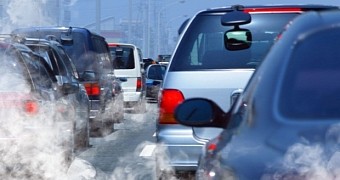Not that this is a good enough reason to disregard traffic rules and be like “whatever, I do what I want” behind the wheel, but as it turns out, stopping at red lights can give you cancer, possibly a respiratory or heart disease.
This is because, while waiting for those darn traffic lights to turn green, it is likely that you will be exposed to worryingly high concentrations of air pollutants. Or so argue scientists with the University of Surrey in a study in the journal Atmospheric Environment.
Traffic intersections are a hazard in more than one way
In the Atmospheric Environment report detailing their work, the University of Surrey specialists say that, having taken the time to document the levels of dangerous air pollutants around signalized traffic intersections, they found them to be worryingly elevated.
Specifically, the scientists say that air concentrations of fine particulate matter, which comprises teeny tiny particles that come from burning fuel in car engines and that the World Health Organization lists as carcinogenic to humans, are up to 29 times higher around signalized traffic intersections.
The researchers theorize that this is because, when reaching such intersections, drivers have no choice but to decelerate in order to stop and then rev up to move away when lights finally turn green. All this commotion births more fine particulate matter than just driving down a road.
Because cars sit close to one another while stopped at signalized traffic intersections, drivers and passengers alike are exposed to considerable amounts of fine particulate matter. In time, this can cause them to develop all sorts of health trouble like cancer and respiratory or heart diseases.
In fact, it is estimated that, although most drivers spend just 2% of an average journey waiting for traffic lights to change, this fairly short duration accounts for about 25% of their overall exposure to air pollution while behind the wheel.
“Our time spent travelling in cars has increased by over 10% in the last ten years and with more cars than ever joining the roads, we are being exposed to increasing levels of air pollution as we undertake our daily commutes,” says specialist Prashant Kumar.
Tips and tricks to limit exposure to air pollution
University of Surrey scientist Prashant Kumar and fellow researchers say that, although it is true that signalized traffic intersections are a health hazard, there are some tricks and tips that people can turn to to limit their and their loved ones' exposure to air pollution.
In a nutshell, the specialists recommend that people keep their car's windows shut and the fans off while waiting at traffic lights. This should keep the dirty air from getting into their four-wheeler and, from there, into their lungs and blood stream.
Increasing the distance between one's vehicle and the ones before it can also help reduce exposure to fine particulate matter and other air pollutants, they go on to detail. Lastly, having authorities better manage traffic in order to limit waiting time is bound to benefit public health.

 14 DAY TRIAL //
14 DAY TRIAL //